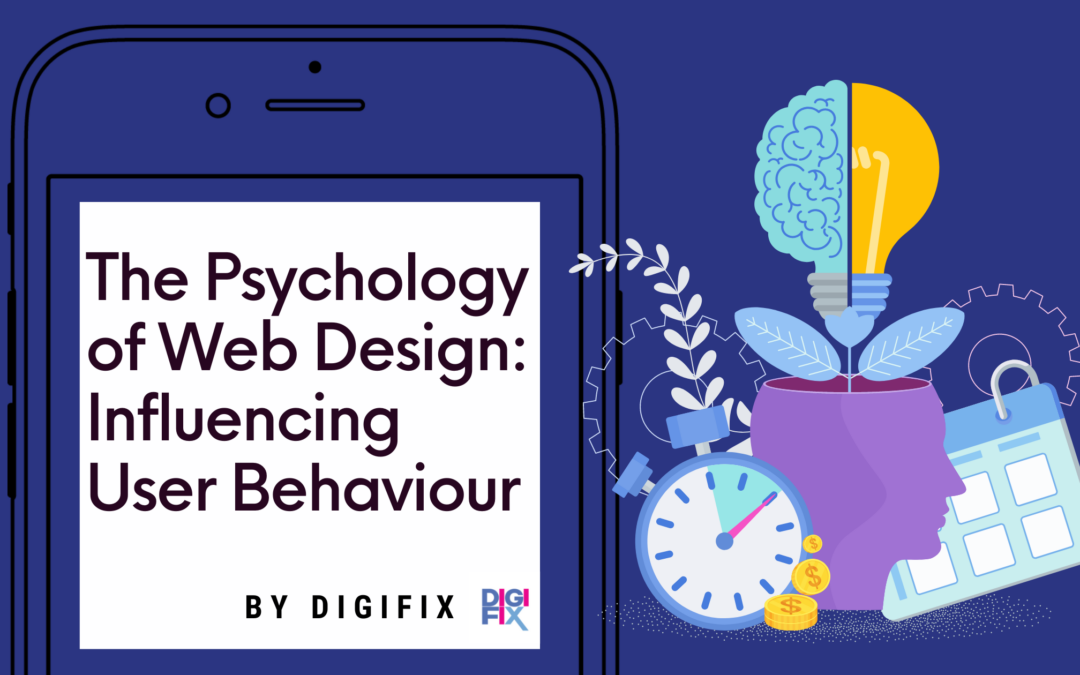Discover the power of web design psychology in influencing user behavior. Learn effective SEO optimization techniques and engage your audience with user-centric design. Explore the impact of color psychology and more.
Introduction
In the digital age, web design has become a crucial factor in attracting and engaging users. A well-designed website not only appeals to the aesthetic senses but also influences user behavior. This article explores the fascinating field of web design psychology, uncovering the strategies and techniques that designers employ to create user-centric experiences. From the clever use of colors to the placement of call-to-action buttons, every element on a webpage can evoke specific emotions and drive desired actions. By understanding the psychology behind web design, businesses can create websites that effectively engage users and achieve their objectives.
Understanding User Behavior
Before diving into the psychology of web design, it’s essential to understand user behavior. Users navigate websites with specific goals in mind, whether it’s finding information, making a purchase, or simply enjoying the content. By aligning web design with user behavior patterns, designers can create seamless experiences that encourage users to stay longer, explore further, and take the desired actions.
The Power of Visual Elements
-
Color Psychology:
Colors play a vital role in shaping user perceptions and emotions. For example, warm colors like red and orange can create a sense of urgency or excitement, making them effective for call-to-action buttons. On the other hand, cool colors such as blue and green evoke feelings of calmness and trust, making them suitable for websites in the healthcare or finance industry.
-
Typography:
The choice of fonts and typography can significantly impact user experience. Different fonts convey distinct personalities and emotions. Serif fonts, with their classic and traditional appearance, are often associated with professionalism and reliability. Sans-serif fonts, on the other hand, offer a modern and clean look, suitable for contemporary brands. It’s important to select fonts that align with the website’s overall design and target audience.
-
Images and Graphics:
Visual content, such as images, infographics, and videos, can capture attention and convey information more effectively than text alone. When selecting images, it’s important to consider relevance, quality, and diversity. Images should resonate with the website’s content, engage the audience, and reflect the desired emotional response. Additionally, optimizing images with descriptive alt text helps improve accessibility and search engine optimization (SEO).
Creating User-Focused Experiences
-
User-Friendly Navigation:
Clear and intuitive navigation is essential for guiding users through a website. By implementing logical menus, breadcrumb trails, and search bars, designers can help users find what they need quickly. A well-organized website structure enhances user experience and encourages exploration.
-
Responsive Design:
In today’s mobile-driven world, responsive web design is crucial. Websites should adapt seamlessly to different devices and screen sizes, providing optimal viewing experiences for users. Mobile-friendly designs not only enhance user satisfaction but also improve search engine rankings.
-
Call-to-Action (CTA) Placement:
Strategically placing CTAs can influence user behavior and drive conversions. CTAs should be prominent, visually appealing, and clearly communicate the desired action. By utilizing persuasive language and design techniques, designers can encourage users to take the desired next step.
Conclusion
In conclusion, the psychology of web design offers valuable insights into how designers can influence user behavior. By leveraging color psychology, typography, images, and graphics, designers can create visually appealing websites that evoke the desired emotional responses. User-focused experiences, characterized by user-friendly navigation, responsive design, and strategic CTA placement, ensure that visitors stay engaged and accomplish their goals. By integrating these psychological principles into web design, businesses can effectively capture the attention of their target audience, increase conversions, and create meaningful connections.
FAQs (Frequently Asked Questions)
-
How does color psychology impact user behavior?
Color psychology is the study of how colors affect human emotions and behaviors. By strategically using colors in web design, designers can create specific emotional responses, influencing user behavior and driving desired actions.
-
Why is responsive design important?
Responsive design ensures that websites adapt seamlessly to different devices and screen sizes. It enhances user experience, improves search engine rankings, and caters to the growing number of mobile users.
-
How can I optimize my website’s navigation?
To optimize your website’s navigation, focus on creating clear and intuitive menus, implement breadcrumb trails for easy backtracking, and provide a search bar for quick access to specific content. User testing and feedback can also help identify navigation issues.
-
What is the role of images in web design?
Images in web design serve multiple purposes. They capture attention, convey information visually, and evoke emotions. Relevant and high-quality images can enhance user engagement and make the website more visually appealing.
-
How can I create effective call-to-action buttons?
Effective call-to-action buttons should be visually striking, communicate the desired action clearly, and be placed strategically on the webpage. Using action-oriented language and designing buttons that stand out from the surrounding elements can increase their effectiveness.
Do you want more traffic?
—————
Hi, we are an Australian digital agency doing groundbreaking work to help a business like yours reach its full potential. My only question is will you qualify for our services?
Do you want more traffic?
—————
Hi, we are an Australian digital agency doing groundbreaking work to help a business like yours reach its full potential. My only question is will you qualify for our services?

